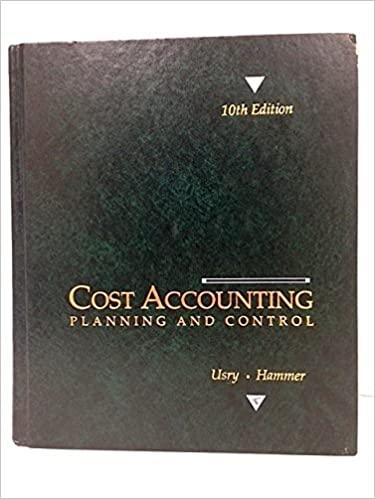Answered step by step
Verified Expert Solution
Question
1 Approved Answer
Your friend, another accountant, has bet you that with your knowledge of accounting and just the computations for common analytical measures, you can figure out
Your friend, another accountant, has bet you that with your knowledge of accounting and just the computations for common analytical measures, you can figure out many aspects of a company's financial statements. You take the bet!
Match each computation to one of the liquidity and solvency measures in the table. Hint: Begin by looking for simple computations and identifying the amounts in those computations. Look for other measures that use those amounts.
Liquidity and Solvency Measures Computations
Quick ratio $: $ Correct
Ratio of fixed assets to longterm liabilities $: $ Correct
Inventory turnover $: $ $: Correct
Accounts receivable turnover $: $ $: Correct
Number of days' sales in receivables $ $: : $: Correct
Times interest earned $ $: $ Correct
Current ratio $: $ Correct
Ratio of liabilities to stockholders' equity $: $ Correct
Working capital $ $ Correct
Number of days' sales in inventory $ $: : $: Correct
Use the following balance sheet form to enter amounts you identify from the computations on the Liquidity and Solvency Measures panel. You will identify other amounts for the balance sheet on the Profitability Measures panel. If you have a choice of two amounts, assume the first amount in the ratio is for the end of the year. Compute any missing amounts.
Score:
Balance Sheet
December Y
Assets
Current assets:
Cash
$
Marketable securities
Accounts receivable net
Inventory
Prepaid expenses
Total current assets
Longterm investments
Property, plant, and equipment net
Total assets
Liabilities
Current liabilities
Longterm liabilities
Total liabilities
Stockholders Equity
Preferred stock, $ par
$
Common stock, $ par
Retained earnings
Total stockholders equity
Total liabilities and stockholders equity
Match each computation to one of the profitability measures in the table.
Profitability Measures Computations
Asset turnover $: $ $: Correct
Return on total assets $ $: $ $: Correct
Return on stockholders equity $: $ $: Correct
Return on common stockholders equity $ $: $ $: Correct
Earnings per share on common stock $ $: shares Correct
Priceearnings ratio $: $ Correct
Dividends per share $: shares Correct
Dividend yield $: $ Correct
Use the following comparative income statement form to enter amounts you identify from the computations on the Liquidity and Solvency Measures panel and on the Profitability Measures panel. Compute any missing amounts and complete the horizontal analysis columns. Enter percentages as decimal amounts, rounded to one decimal place. When rounding, look only at the figure to the right of one decimal place. If round down and if round up For example, for enter For enter
Score:
Comparative Income Statement
For the Years Ended December Y and Y
Y
Y
Amount Increase Decrease
Percentage Increase Decrease
Sales
$
Cost of goods sold
Gross profit
$
Selling expenses
$
Administrative expenses
Total operating expenses
$
Income from operations
$
Interest expense
Income before income tax
$
Income tax expense
Net income
$

Step by Step Solution
There are 3 Steps involved in it
Step: 1

Get Instant Access to Expert-Tailored Solutions
See step-by-step solutions with expert insights and AI powered tools for academic success
Step: 2

Step: 3

Ace Your Homework with AI
Get the answers you need in no time with our AI-driven, step-by-step assistance
Get Started


